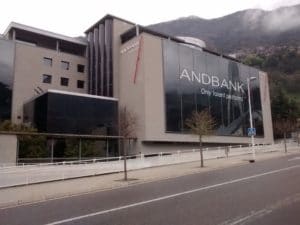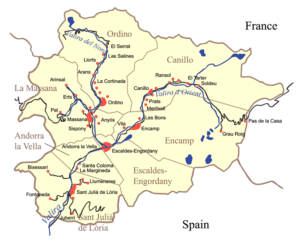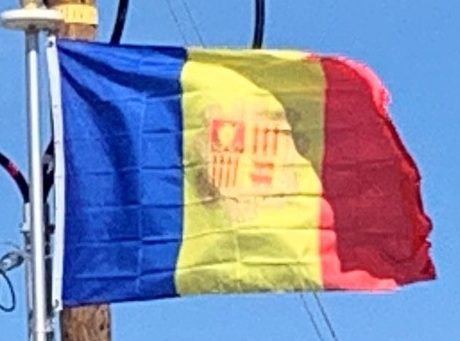The Andorran opening to the capitalist economy resulted in two axes: mass tourism and the country’s tax exemption. The first steps towards the capitalist boom date from the 1930s, with the construction of FHASA and the creation of professional banking with Banc Agrícol (1930) and Crèdit Andorrà (1949), later with Banca Mora (1952), Banca Cassany (1958) and SOBANCA (1960). Shortly after activities such as skiing and shopping become a tourist attraction, with the inauguration of ski resorts and cultural entities in the late 1930s. All in all, a renovated hotel industry has developed. On April 1968 a social health insurance system was created (CASS).

The Andorran Government necessarily involved planning, projection and forecasts for the future: with the official visit of the French co-prince Charles de Gaulle in 1967 and 1969, it was given approval for the economic boom and national demands within the framework of human rights and international openness.
Andorra lived an era commonly known as Andorran dream (in relation to the American dream) alongside with the Trente Glorieuses: the Mass culture rooted the country experiencing radical changes in the economy and culture. Proof of this event was Ràdio Andorra, number one transmitter musical radio station in Europe on this period, with guests and speakers of great importance promoting musical hits of Chanson française, Swing, Rhythm & blues, Jazz, Rock & roll or American Country music. So much so that Andorra achieved a GDP per capita and a life expectancy higher than the most standard countries of the current economy.
Given its relative isolation, Andorra has existed outside the mainstream of European history, with few ties to countries other than France, Spain and Portugal. In recent times, however, its thriving tourist industry along with developments in transport and communications have removed the country from its isolation. Since 1976 the country sees the need to reform Andorran institutions due to the anachronisms in the field of sovereignty, human rights and the balance of powers as well as the need to adapt legislation to modern demands. In 1982 a first separation of powers took place when instituting the Govern d’Andorra, under the name of Executive Board (Consell Executiu), chaired by the first prime minister Òscar Ribas Reig with the approval of the Co-Princes. In 1989 the Principality signed an agreement with the European Economic Community to regularize trade relations.
Its political system was modernized in 1993 after the Andorran constitutional referendum, when the constitution was drafted by the Co-Princes and the General Council and approved on 14 March by 74.2% of voters, with a 76% turnout. The first elections under the new constitution were held later in the year. The same year Andorra became a member of the United Nations and the Council of Europe.
Andorra formalized diplomatic relations with the United States in 1996 participating in the 51st UN General Assembly, a very important fact in view of the normalization that the country aspired to. First General Syndic Marc Forné took part on a speech in Catalan in the General Assembly to defend the reform of the organization, and after three days Forné took part in the parliamentary assembly of the Council of Europe to defend the linguistic rights and the economy of Andorra. In mid-2006 the monetary agreement with the European Union is formalized, which allows Andorra to use the Euro in an official way, as well as coin its own Euro currency.
Geography:

